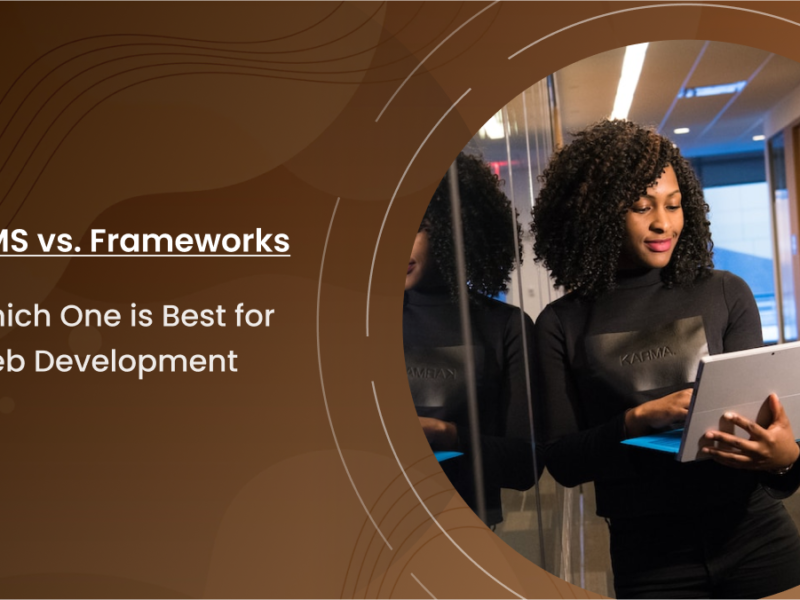In this competitive market, enterprises face a new challenge to sustain their position and retain potential customers daily.
And with evolving customer requirements, companies are now providing their services through mobile applications. However, many of them develop apps without knowing the user’s needs.
To mitigate this issue, a Minimum Viable Product gets introduced in the Software Development Life Cycle Process.
MVP is an app executing minimal functionalities and helping organizations integrate essential components into their business software. By reading this blog further, you will learn about MVP in software development.
Minimum Viable Product: A Brief Introduction
In software development, MVP refers to applications providing only basic functionalities and features to the end-users.
Experts consider Minimum Viable Product the most effective way to build a strong business foundation by saving additional expenses and time-to-market. In addition, MVPs have become a top choice of startups. A product team on-demand can help businesses build and launch minimum viable products (MVPs) quickly and efficiently.
You can consider the MVP app as a trial version of the software, whose main objective is to collect feedback regarding its working. Companies deploy it in their initial phase for gathering end-user reviews and modifying their business application accordingly. Launching a Minimum Viable Product (MVP) successfully is the first step to product launch successfully.
What is MVP Development?
MVP development is the primary operation that holds activities, such as planning, designing, crafting, and maintaining the Minimum Viable Product.
When the organizations have to fabricate an MVP app, the overall process gets divided into a five-step procedure, including:
- Step 1: Understanding the Market
- Step 2: Discovering Target Audience
- Step 3: Finalizing the features
- Step 4: Creating the App
- Step 5: Updating as per feedback
These five steps are the pillars of MVP development. Let’s explore all of them in detail.
The Software Development Process to Create an MVP
Step 1: Market Research and Ideation
At first, you have to research the market to understand the current trends and competitor strategies. It will provide you with an insight into the problems which you can solve with your application.
In addition, you will get to know the drawbacks of other apps available in the market.
After collecting relevant information, you must form a concept about which user pain points you will relieve. Further, you have to identify your target audience.
Step 2: Primary and Secondary Stakeholder Identification
Once all the market details are available, the following primary step is to understand your target customer base.
While performing this step, you must focus on primary and secondary users.
For instance, if you are an eCommerce company selling gym products, your primary users will be gym trainers and vendors. And your secondary users will be your internal staff. E-commerce startups should launch MVPs to validate their product ideas and get feedback from early adopters before investing heavily in development.
It is a crucial phase that leads to building an accurate app foundation.
Step 3: Selecting the relevant features
At this stage, you must brainstorm ideas, conduct meetings, and go through different customer personas.
The primary aim of this step is to list down the MVP features.
You have to decide the most significant features that can convey your message, helps to establish your brand, and convert the visitor into a customer.
It is a crucial task, as selected features will be your company’s first impression. You must understand your target audience’s requirements and offer them a conversational interface and robust backend.
Step 4: Development and Deployment
After selecting the features and functionalities, the MVP project gets escalated to the development phase.
Under this, the development team creates its frontend design and system architecture and initiates its engineering. Most teams follow agile development methodology to include dynamic requirements and comply with changing trends.
Further, developers create the MVP application, and testers verify its functioning and patch all the loopholes. And the applications get deployed and becomes available to all the users.
Step 5: Feedback and Upgradation
It is the final step in the MVP software development process. It gets performed consistently to align with market fashion and prove up-to-date features.
At this step, you must collect feedback and reviews about your MVP application.
Once you have plenty of feedback data from different users, you must evaluate it to discover potential app drawbacks. It will help you implement essential app updates, leading to compliance with business user expectations.
As a result, you will have high productivity, customer satisfaction, reliability, and conversion rate.
Exploring the advantages of MVP
Accurate Market Demand Analysis
MVP application helps collect vital customer feedback and lets the company understand current market trends more precisely.
For instance, if a customer is utilizing your application and cannot find a specific feature available in other similar applications. Then, that user will provide you the feedback to add that particular function to your software.
As a result, you will get updated with customer requirements, and your company will grow seamlessly.
Cost Saving
Minimum Viable Products provide only essential features, and their look offers elegant style, reducing the developer’s effort. In addition, you will require only minimal resources to create an MVP app.
Moreover, its overall structure is concise and doesn’t require significant changes regarding implementing modifications.
Hence, its development and maintenance costs are less than traditional applications, saving high expenses.
Few Errors
The complete architecture of MVP software is compact; to create it, engineers must write a modular source code.
Further, most of its errors get handled during the unit testing, making the development process faster.
In addition, due to its small size, engineers are an aid to effortlessly identify its loopholes and patch them before moving to the production environment.
Wrapping Up: MVP in Software Development
Minimum Viable Product has become a crucial step in every organization’s software development process. It aids them in gathering market and customer insight, building a business-oriented solution, and optimizing productivity.
In addition, MVP development is affordable, easy to maintain, and can get completed in a shorter time to market.
Consequently, whether it’s a startup or a well-founded organization, every firm should create an MVP app before launching the full-fledged application.
Author’s Bio:
Jemin Desai is a Technical Product Manager and tech-savvy at Positiwise Software Pvt Ltd. He has more than 20 years of experience for implementing the latest technologies in designing top-notch products for multiple clients.



